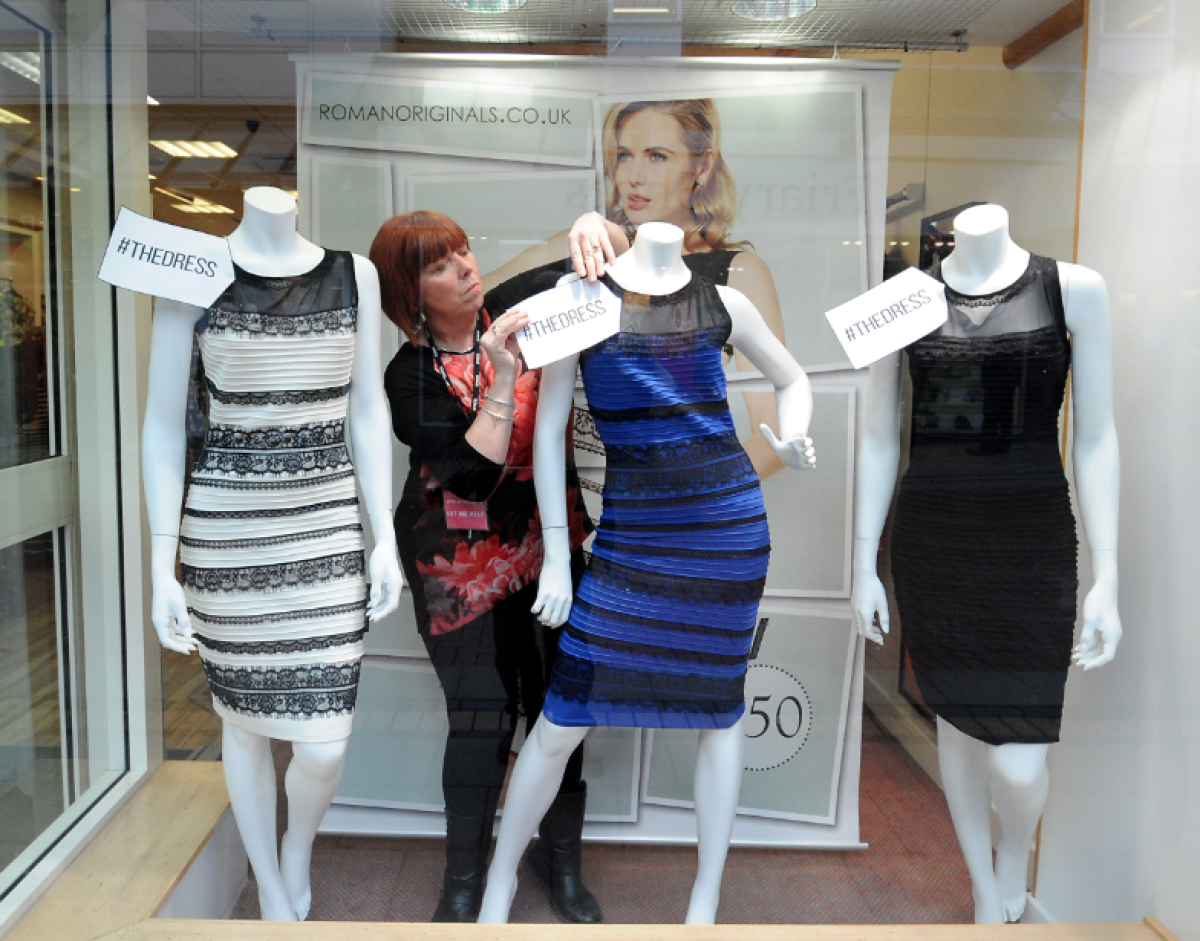Scientists are just as obsessed with #thedress as you are: Here’s why

If you can’t stop thinking about the divisive dress that appears blue and black to some and white and gold to others, you are not alone: Scientists who study visual illusions have been dazzled by it too.
“The whole field was discussing it on Facebook this morning,” said Arthur Shapiro, director of the Collaborative for Applied Perceptual Research & Innovation at American University in Washington, D.C. “For all its pop culture glory, I think it is actually pretty interesting.”
Qasim Zaidi, who teaches at the Graduate Center for Vision Research at the State University of New York College of Optometry, agreed.
“It is one of the more striking examples of perception differences across individuals that I’ve ever seen,” he said. “It is special, there is no question about it.”
(Other examples of perception differences include whether you see a ballet dancer spinning to the left or the right, or if the big rectangle on the left of this image looks darker or lighter to you than the rectangle on the right).
Zaidi thinks the reason people are seeing the dress in two completely different ways probably boils down to whether or not an individual’s brain is taking into account the lighting in the picture.
After all, under other lighting conditions, the dress clearly appears blue and black, as you can see in the photo above.
“One of my students who is trained in photography could completely discount the illumination and he saw it as blue and black,” he said. “People learn differently in their brains how to use visual cues.”
He notes that there is no human face, or other context in the picture to guide our brains in one interpretation of the image or another.
“The background is vague and you are not sure what to do with it, so your brain has to make up its own context,” he said.
But as to why some people’s brains make an adjustment in the blue and black direction while others see white and gold -- and where in the visual process this adjustment is made -- he can’t say for sure.
“Anyone who tells you they have a complete explanation, they are completely wrong,” he said. “To tell you exactly what is going on in this particular case would take a lot more work.”
Shapiro, who has made many optical illusions to study visual perception said the dress serves as a compelling reminder that there is a lot of variation in how individuals filter the world.
“The real question is why doesn’t this happen more often?” he said. “Seeing color is a complicated process.”
He added that on Monday he would be flying to Tokyo for a symposium on optical illusion.
“My guess is that dress is going to be a hot topic there,” he said.
Science rules! Follow me @DeborahNetburn and “like” Los Angeles Times Science & Health on Facebook.






